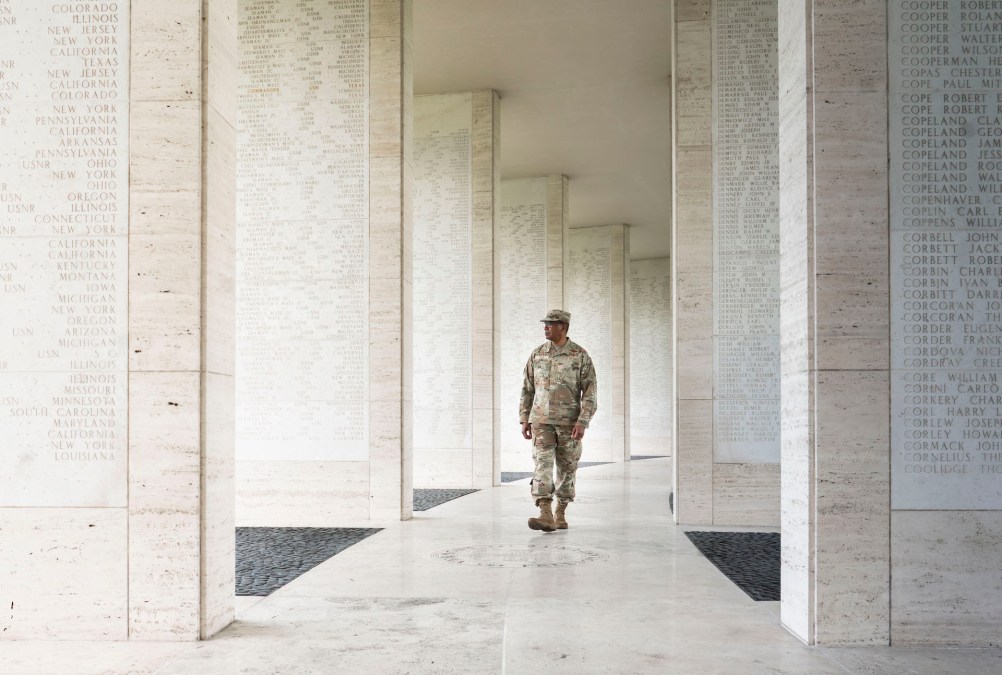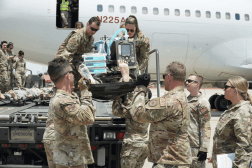Transportation Command could see expanded contested logistics responsibilities next year

As the military’s major mover of people, weapons and aid, U.S. Transportation Command has hundreds of airlift sorties in-flight, 15 or more ships underway, at least 10 commercial tankers on hire, 1,000-plus freight shipments and 200-plus railcars enroute, and 10 patients in air evacuations on any given day, according to recent data.
Those high-stakes operations are unfolding against a backdrop where determined enemies are increasingly trying to disrupt the command’s logistics assets, facilities and activities across the world, and in cyberspace.
“Now that adversaries have the ability to contest logistics across the entire spectrum, from point-of-origin to point-of-use — and I’ll say that again, from point-of-origin to point-of-use, and point of origin doesn’t necessarily have to be kinetic, but non-kinetic disruptions can be just as catastrophic — that means that we are now fighting to move, instead of moving to fight,” Air Force Gen. Randall Reed, commander of Transcom, told DefenseScoop in a recent interview.
Reed has been clear about his aims to help the joint force confront challenges associated with contested logistics across all warfighting domains since the start of his tenure as Transcom chief in late 2024. The command pilot pointed to multiple contested logistics-related concerns in recent congressional testimony. He has also prioritized discussions about logistics coordination and sustainment with international partners during bilateral engagements, including with several Indo-Pacific military leaders on a trip to that region in June.
The command may be poised to soon gain more momentum to get after threats to mobility.
Tucked into the Senate Armed Services Committee’s draft of the National Defense Authorization Act for fiscal 2026 is a provision that would codify the command’s duties to review and resolve risks related to “contested logistics for the Department of Defense on a global basis.”
The bill would also task Transcom with planning and maintaining operations of the Joint Deployment and Distribution Enterprise involving contested logistics, spanning all physical and digital domains. The JDDE is essentially a military construct that synchronizes the transit of U.S. military officials and supplies.
“We are expecting to get contested in the air, on land and at sea — and with our information as well, because we move information. And so the information piece or the cyber realm can touch all domains as well,” Reed noted.
Logistics is a key warfighting function, and Transcom and its close commercial partners are in increasingly high demand to deliver for an expanding scope of complex contemporary missions.
In the legislation, lawmakers define “contested logistics” as those that occur under conditions in which an adversary or competitor deliberately seeks or has sought to deny, disrupt, destroy, or defeat friendly force logistics operations, equipment and efforts across any domain.
Reed said there are many elements that can “get in the way of logistics, naturally” like weather, unreliable legacy infrastructure, or maintenance problems with transportation platforms that are out of the command’s control.
“From a logistician standpoint, anything that gets in the way of successfully doing what you’ve been asked to do, we tend to look at that as contested — period. But when it comes to defense, obviously there’s a more consequential and deadly piece to that, specifically when you have an actor or actors that have the intent in disrupting that or trying to upset or destroy that. And so, that adds yet another element or layer onto this that we need to be very cognizant of and realize that one, it’s there, and two, we cannot allow that to stop us, and we have to be able to succeed in spite of that,” he explained.
Beyond requiring the transfer of all activities connected to contested logistics to Transcom’s portfolio, the NDAA provision would also mandate the command to work with specific interagency partners to compile and submit to Congress an in-depth gap assessment on the JDDE’s ability to project, maneuver and sustain the joint force in contested environments, and to provide recommendations to mitigate those vulnerabilities.
“As far as the NDAA goes, what we may expect out of that is a little bit of oversight to a certain extent, but also clear expectation that a responsible entity will have a little bit more tools in the chest in order to strengthen the ability to execute logistics [anywhere], to help identify some of the gaps and be able to be successful no matter who the responsible party is,” Reed said. “So it may be connected to another combatant command. It may generate out of the services. It may be a combat service support agency. It may very well be ourselves. It may be within the commercial sector. But in order for logistics to be successful, there will now be an increasing ability to recognize the problem, be able to identify and codify the problem, and then to help lead a path forward to address the problem.”
The rapidly changing nature of warfare — and Russia’s ongoing war in Ukraine, in particular — has put a spotlight on the significance of logistics advantages in supporting modern military operations. The senators’ inclusion of these new Transcom mandates in their version of the NDAA suggest that they recognize the need for Congress to help simplify certain overly complicated aspects of the DOD’s current logistics landscape.
In Reed’s view, if it is signed into law, this proposal could eventually help accelerate existing process standardization initiatives that Transcom has already been pursuing regarding the JDDE.
It might also “actually help drive a little bit more unification amongst” the combatant commands in these workflows, he noted.
“This is an evolution, and we will continue to grow with it. We are becoming stronger and paying attention to all the aspects, and how adversaries may try to disrupt that,” Reed told DefenseScoop.






